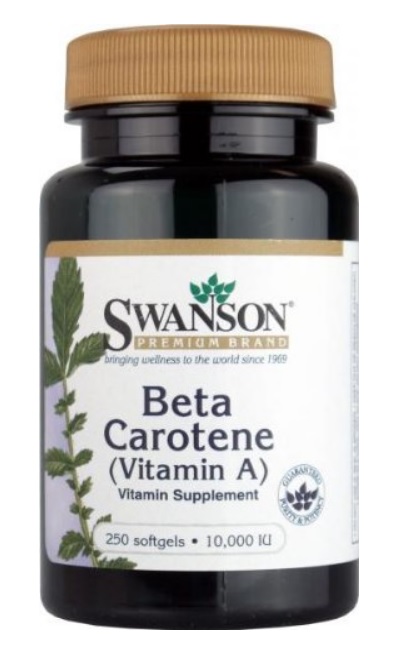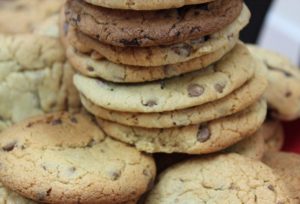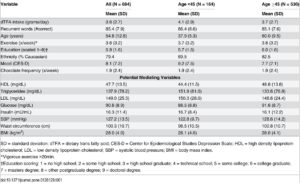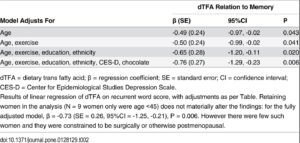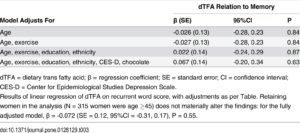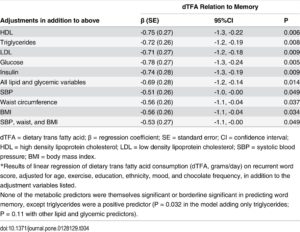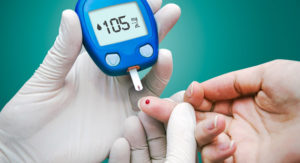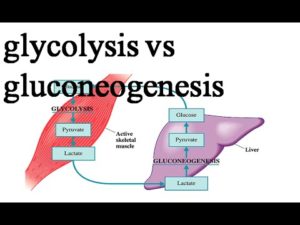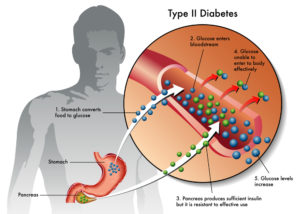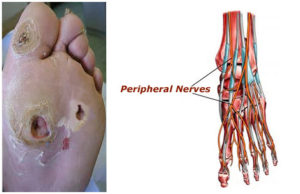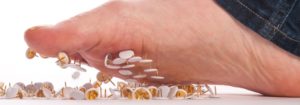
I was recently asked for breakfast ideas by a client who is making the transition to a WFPB diet – swapping the brioche and croissant for berries and cashews.
So here goes…
Five suggestions from Dr Greger’a How Not To Die Cookbook:
SUMMERTIME OATMEAL
MAKES: 2 SERVINGS
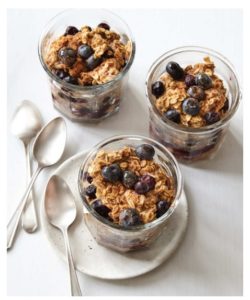
Some people think of oats as a hot cereal perfect for when leaves start falling or there’s snow on the ground, but I love them all year round. In our house, we call this version Summertime Oatmeal because it’s a cool and refreshing way to enjoy oatmeal even when it’s sweltering outside. Prepare it the night before and spoon the goodness into jars for a quick and easy breakfast.
1 cup/ 100g rolled oats
1 tablespoon chia seeds
1 tablespoon ground flaxseeds (or linseeds)
½ teaspoon ground cinnamon
1 ¾ cups /425ml Almond Milk
2 tablespoons Date Syrup
1 2- to 3-inch/ 5 to 8cm piece vanilla pod, split and scraped (or 1 teaspoon extract)
⅔ cup/ 65g fresh or frozen blueberries or ⅔ cup/ 125g strawberries
Combine all the ingredients in a medium bowl and stir to mix. Spoon into two 1-pint/ 470ml jars with tight-fitting lids or two small bowls and cover tightly. Refrigerate overnight and remove the vanilla pod before serving.
SUPERFOOD BREAKFAST BITES
MAKES: 24 (1-INCH/ 2.5CM) BITES (4 TO 6 SERVINGS)
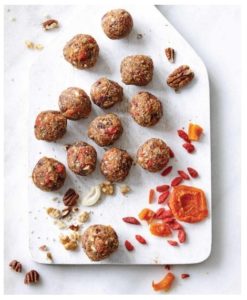
Stash these delicious bites in the fridge for an easy on-the-go breakfast or after-workout snack.
¾ cup /130g pitted dates, soaked in hot water for 20 minutes, then drained
¾ cup/ 185g raw walnuts, pecans or cashews
¾ cup/ 115g dried cranberries, apricots, apple slices or other dried fruit, chopped if necessary
¼ cup/ 35g sunflower seeds
2 tablespoons goji berries or barberries
2 tablespoons chia seeds or hemp hearts (hulled hemp seeds)
2 tablespoons ground flaxseeds (or linseeds)
1- to 1 ½-inch/ 2.5 to 4cm piece vanilla pod, split and scraped (or ½ teaspoon extract)
¼ teaspoon ground cinnamon
In a food processor, combine the drained dates and nuts and pulse until the nuts are finely ground and the dates are incorporated. Add the remaining ingredients and process until well combined. The mixture should be very sticky. If it seems too dry to hold together, add a little water, 1 tablespoon at a time. If the mixture is too wet, add a little more ground flaxseeds or some rolled oats. Roll a heaped tablespoonful of the mixture between the palms of your hands to form a 1-inch/ 2.5cm ball. Transfer to a plate. Repeat until all the mixture has been rolled into balls. Cover the plate with foil or baking parchment and refrigerate for 4 hours before enjoying. Store in the refrigerator.
BANANA-CHOCOLATE SMOOTHIE
MAKES: 1 (2-CUP/ 500ML) SERVING
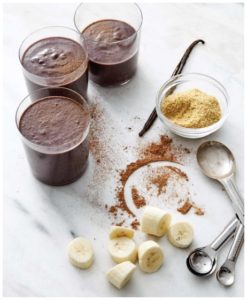
This creamy, chocolatey smoothie tastes so rich and delicious, you’ll forget how healthy it is!
1frozen ripe banana, cut into chunks before freezing
⅓ cup/ 35g frozen blueberries
2 tablespoons unsweetened cocoa powder
1 tablespoon ground flaxseeds (or linseeds)
1-to 1 ½-inch/ 2.5 to 4cm piece vanilla pod, split and scraped (or ½ teaspoon extract)
1 tablespoon almond butter
2 tablespoons Date Syrup (optional, depending on the sweetness of the fruit)
1 cup/ 225g raw spinach leaves
3 to 4 ice cubes (optional)
Combine all the ingredients with 1 cup/ 250ml of water in a high-speed blender. Blend until thick and smooth. For a thinner texture, add less ice (if using) or more water. Serve immediately.
SUPER GREEN SMOOTHIE
MAKES: 1 (2 ½-CUP/ 600ML) SERVING
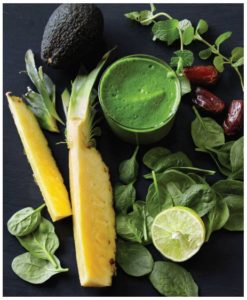
You can check off six of the Daily Dozen scorecard boxes with this delicious and refreshing drink. Six with just one smoothie! For a thinner texture, add a little more water, if desired.
2 cups/ 450g packed fresh baby spinach
1 large apple, cored
1 cup/ 200g diced pineapple
½ ripe Hass avocado, peeled and pitted
¼ cup/ 15g packed fresh mint leaves
3 soft Medjool dates, pitted
1 ¼-inch/ 5mm piece fresh turmeric, grated (or ¼ teaspoon ground)
2 teaspoons blended peeled lemon or lime
1 tablespoon ground flaxseeds (or linseeds)
Ice cubes (optional)
In a blender, combine all the ingredients and blend until completely smooth. Add ⅔ cup/ 160ml or more of water and ice (if using) and blend until smooth. Serve immediately.
DATE SYRUP
MAKES: ABOUT 1 ½ CUPS/ 370ML
Green Light sweeteners are a little hard to come by. Date sugar, which is simply dried, pulverized dates, can be used as a whole-food, granulated sugar, and blackstrap molasses is a good choice for a healthy liquid sweetener, but it has a strong, sometimes overpowering flavor. We’ve come up with our own DIY date syrup we hope you’ll love as much as we do.
1 cup/ 175g pitted dates
1 cup/ 250ml boiling water
1 teaspoon blended peeled lemon.
Combine the dates and hot water in a heatproof bowl and set aside for 1 hour to soften the dates.
BLENDED WHOLE LEMONS AND LIMES
Instead of cooking with lemon or lime juice, use the blended whole fruit to get more nutritional benefit. When you use just the juice, you lose out on the fibre and all the nutrition that was attached to it. Here’s a great time-saver when cooking with blended lemon or lime.
Peel and blend a whole lemon and then freeze it in 1-teaspoon portions – a small silicone ice cube tray is ideal for this. Then, grab a cube from the freezer whenever you need it!
ALMOND MILK
MAKES: ABOUT 2 CUPS/ 500ML
Here’s a fast and easy way to make a whole-food almond milk. For taste and convenience I personally prefer unsweetened soya milk. (I like the flavor of Whole Foods Market’s store brand the best.) But I wanted to embrace the challenge of creating recipes containing only Green Light ingredients. This doesn’t offer the calcium, vitamin D and B12 fortification of commercial almond milks, but it avoids the added salt and thickeners of questionable safety, such as carrageenan. Choose almond butter made from raw rather than roasted or toasted almonds to decrease exposure to advanced glycation end products.
2 tablespoons smooth raw almond butter
2 cups/ 500ml water
Combine the almond butter and water in a high-speed blender and blend until smooth. Transfer the milk to a glass bottle or jar with a tight-fitting lid and chill until ready to serve. Shake well before using.
Greger, Michael. The How Not To Die Cookbook: Over 100 Recipes to Help Prevent and Reverse Disease. Pan Macmillan. Kindle Edition.
Now for some of my own recipes…
OATS WITH FRUIT, SEEDS AND NUTS
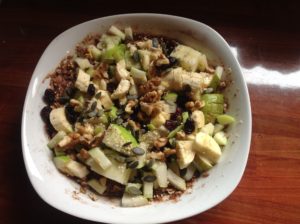
There is no particular recipe for this, I just add a mixture of the following ingredients and it makes a HUGE breakfast which is filling and full of goodness,
Jumbo organic oats, sultanas, an apple, pear and banana (all chopped small), frozen berries (strawberries, raspberries, blackberries, blackcurrants, redcurrants, blueberries), plant milk (soy, almond, hemp, oat or just water if you prefer), 1 or 2 tablespoons ground flaxseeds, 1 tablespoon pumpkin seeds, 1 or 2 teaspoons chia/sunflower/poppy/sesame seeds, 1 or 2 teaspoons unsweetened cocoa or cacao powder, 1 teaspoon ground cinnamon, 6 halves walnut halves, dried unsulphured apricot (finely chopped), two chopped dates.
I usually put the frozen berries in a large bowl with either water or plant milk, then pop it in the microwave for 2 minutes to thaw and warm the milk/berry mix. This releases the lovely flavours. Then I add all the other ingredients and give it a good mix. You decide how wet or dry you want the mixture to be. I tend to like it quite wet so I often add more milk or water once it is mixed. The quantities will vary depending on how much hunger you have, but you can’t go wrong with this lovely recipe. Another tip is to mix all the dry ingredients to your own taste in a huge batch and store in a sealable plastic container. This saves lots of time in the mornings and all you need to do is chop up the fresh fruit and add the berries and milk/water.
NUT BUTTER & BANANA ON TOAST
Use unsalted, organic and 100% nut butters. Almond, cashew or peanut butters are all fine. Ideally use homemade wholegrain bread which is made without added oil or salt and with minimal sugar.
Toast the bread, cover with the butter and slice banana on top. Simple and quick.
BANANA & DATE COOKIES
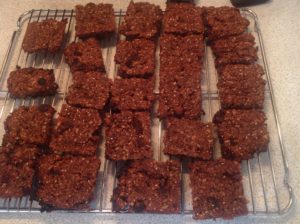
The dates in these cookies add extra fibre, and dried fruit is known to be rich in iron, making these cookies a great recovery nibble after your morning run or cycle.
2 Large Ripe Bananas, mashed
1 Cup (250ml) Organic raw oats
1 teaspoon (5ml) ground cinnamon
2 Tablespoons (30ml) natural nut butter of your choice
¼ Cup (60ml) Chopped dates
Preheat the oven to 350 degrees (200 degrees Celsius).
In a mixing bowl combine the bananas, oats and cinnamon. Once you have the mixture at a wet cookie dough consistency, add the chopped dates and mix thoroughly. Scoop the dough onto a silicon baking sheet, the size of each cookie is completely up to you, but since they will be very filling, they might be hard to finish if they are too big. Bake for 15 minutes and allow to cool on the baking tray for 10 minutes before turning out onto a cooling rack. It’s best to store these in the refrigerator, once they have cooled completely.
HEALTHY NUT BUTTER BOMBS
MAKES: 13-14 cookies
Dry ingredients:
1 cup pecans, toasted
1 cup + 1 tbsp oat flour (I made my own flour in the blender using 1 cup rolled oats)*
60 grams + 2 tbsp rolled oats*
1/2 tsp ground cinnamon
1/2 tsp baking soda
1 tbsp ground flax seed
Wet ingredients:
60 grams pure maple syrup
Peanut butter
3 tbsp brown rice syrup
1/2 tbsp pure vanilla extract
Mix-ins:
80 grams dried sweetened cranberries
3 tbsp seeds of your choice
1. Preheat oven to 325F and toast pecans for 8-10 minutes, watching closely. Remove and set aside to cool. Turn oven temp to 350F.
2. Meanwhile, in a large bowl, whisk together the dry ingredients. In a separate smaller bowl, whisk together the wet ingredients.
3. In a mini processor (or by hand) process/chop the pecans into small crumbs, just smaller than the size of peas. Stir into the dry ingredients.
4. Add the wet ingredients to the dry and stir well until combined. The dough will be very sticky, but not to worry. Fold in the mix-ins.
5. With lightly wet hands, grab about 2 tbsp dough and shape into a ball, packing firmly. Place on a large silicone baking sheet about 2 inches apart. Repeat for the rest, wetting hands every 4 cookies or so.
6. Bake at 350F for 10-12 minutes (I baked for 11.5 mins). Cool on baking sheet for at least 10 minutes. When completely cooled, store in a glass jar or freeze for maximum freshness.
(Sorry, I didn’t take a photo of this one. If you make it, please send me a photo and let me know how you got on.)
BANANA, FRUIT & NUT OAT BARS
MAKES: Loads
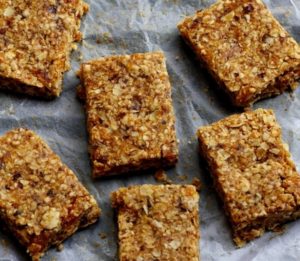
750 grams oats
3-4 mashed bananas
125-250 grams mixed walnuts, hazelnuts, almonds, cashews, any other you like
75 grams ground flaxseed
75 grams mixed seeds (sunflower, sesame, pumpkin, chia, any other you like)
75 grams dried fruit (raisins, sultanas, chopped dates, cranberries, any other you like)
1/2 cup 100% non-concentrate fruit juice (ideally home-made – orange, tropical fruits, any other you like or a mixture of all – use more than 1/2 cup if the mixture is too thick)
2 Tbsp lemon or lime juice
1/2 tsp salt (optional)
Pre-heat the oven at 180 degree Celsius.
Combine flaxseed, seeds and dried fruit in a large bowl. Add the fruit juice and mashed banana and mix well. Add the oats and mix everything together. Fold it onto a large baking tray, spread and press well with you fingers. I placed a silicone baking sheet on top so that they would not stick. Bake for 25 to 30 minutes. Let it cool for 10 minutes. Cut it into squares (I sliced along with a blunt spatula), then turn each square upside down. Put the tray back into the oven and bake it for another 15 minutes. Then turn the pieces over again and bake for another 5 minutes for both the sides to be nice and brown. Let it cool completely and store it in an air tight container for up to a week. The result will be a bar that is crispy on the outside and soft on the inside. Yummy!
FLAXSEED CRACKERS
MAKES: 32 Crackers
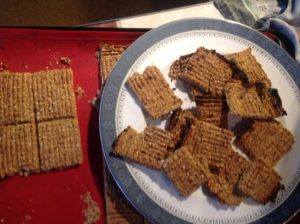
Mix 200 grams of ground flaxseeds with 250 ml of water, add whatever herbs and spices you want, and then spread the dough thinly on a silicone baking sheet. Score the dough into thirty-two crackers and bake at 200 ° C for about twenty minutes. To flavor mine, I use half a teaspoon each of smoked paprika, garlic powder, and onion powder, but you should play around until you find a (salt-free) spice profile you prefer.
Get as thin as possible. Mine were still slightly soft and moist so I put them in the dehydrator for a few hours until crispy.
COCOA, PEANUT BUTTER & DATE TRUFFLES
MAKES: 10-15 depending on how big you make them,
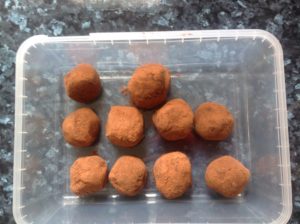
15 dates (choose the softest/moistest possible variety – medjool are ideal and thus don’t need soaking)
2 tbsp unsweetened cacao or cocoa powder
Seeds from 1 or 2 (depending on taste preference) freshly scraped vanilla pod/s or 2 tbsp best quality vanilla extract (brandy instead if desired for special occasions)
2 tbsp homemade unsalted peanut butter
50-100 ml 100% freshly ‘squeezed’ orange juice with all the fibre (introduce carefully so as not to make too liquid)
2 tbsp same cacao/cocoa powder kept for once mix is blended
additional unsweetened cacao/cocoa more to roll the truffles (you may need loads, but use as much as necessary to get them firmish and in balls)
Soak dates in orange “juice” for an hour or so if you have time. (Otherwise, if dates are already really soft don’t bother.) Whizz up the dates, orange “juice”, vanilla extract, peanut butter and cocoa/cacao (I prefer cacao if you get get it) in blender or grinder. When you have a smooth semi-wet mixture (add more orange “juice” if still too thick), spoon it into a small bowl. Add the extra 2 tbsp of cocoa/cacao and stir until you have a thick mix. Get a small plate and layer it with cocoa/cacao. Fill heaped teaspoons of mix and use your finger to drop one onto the plate. Roll it with your fingers in the cocoa/cacao until covered, then roll into a ball between your palms. Give them another quick roll on the plate to cover well with cocoa/cacao and place them in a sealed container.
These are REALLY delicious. Enjoy!
FRESH NUT & SEED VEGETABLE MEDLEY
MAKES: As much as you want!
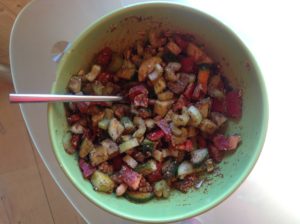
This is really up to what you have in your kitchen. The photo shows some of the possible ingredients. The following are some suggestions:
Cucumber, chopped red/green cabbage, grated/chopped carrot, onion/spring onions, green peas & sweetcorn (from frozen), green beans, red/green/yellow bell pepper, tomato, celery, broccoli, spinach, cauliflower, lettuce, radish, courgette, French beans, mange tout, gherkins, fresh herbs (basil, parsley). The list goes on and on. Limited only by your imagination.
Pumpkin seeds, sunflower seeds, sesame seeds, poppy seeds, flaxseeds (ground), chia seeds.
Walnuts, hazelnuts, pecans, cashews, almonds (whole or flaked).
You could also add beans (kidney, butter, cannellini, chickpeas, haricot (navy) beans, adzuki beans, black-eyed beans).
Here are some ideas* for salad dressings (quantities can be varied to your own personal taste – experiment!)
MUSTARD VINAIGRETTE
Combine 2-3 tablespoons wholegrain mustard with around 50 ml raw apple cider vinegar, 1/2 teaspoon of agave, maple syrup, or brown rice syrup), 1 teaspoon black pepper and 2 tablespoons water. Blend in a small blender and drizzle onto your salad.
MISO VINAIGRETTE
Combine 1 teaspoon miso with around 80 ml water, 2 whole olives, 2 tablespoon brown rice vinegar, a pinch of black pepper, 1/2 teaspoon agave, maple syrup or brown rice syrup, and a tablespoon of wakame flakes (optional).
CREAMY RANCH-STYLE DRESSING
Combine 3 tablespoons raw organic tahini (you can also use regular roasted if you can’t find raw), 80 ml water, 2 tablespoons unsweetened almond milk, a pinch of black pepper if desired, 1-2 tablespoons Herbs de Provence or Italian seasoning, a tiny pinch of fresh ginger.
CREAMY LEMON AND GARLIC MUSTARD DRESSING
Combine the juice from 2 lemons with 1/4 teaspoon minced garlic or 1/4 teaspoon fresh garlic, 1 teaspoon diced onions, 2 tablespoons raw cashew butter (or tahini, almond butter or almond or soy milk), a pinch of black pepper, 2 teaspoons mustard, 1 teaspoon of dried parsley, and 80 ml water.
SWEET LEMON CURRY DRESSING
Combine 2 tablespoons water, 2 tablespoons apple cider vinegar, the juice from 2 lemons, 1/2 teaspoon curry, a tiny pinch of cayenne and black pepper, 1/2 teaspoon pure maple syrup, maple syrup or brown rice syrup (or you may used 1 pureed date or a pureed dried fig that has been soaked in boiling water for 30 minutes to soften, or keep soaked dried fruit in the fridge overnight). For a creamier flavor, add 2 tablespoons either tahini, almond butter or cashew butter in addition to the other ingredients.
JOE’S STANDARD SALAD DRESSING
I use this one a lot, usually varied one way or another depending on what I have in stock. Just blend it all together.
50ml water or liquid from a jar of gherkins
Juice of half a lemon
3 tablespoons of vegan balsamic vinegar (i/e/ without gelatin – this is a good one)
1 tablespoon homemade soy sauce **
1 tablespoon wholegrain mustard
2 cloves garlic, minced
Fresh parsley and/or coriander, finely chopped
* Thanks to onegreenplant.org for some inspirational ideas.
** HOMEMADE SOY SAUCE
Garlic Vinegar (make this the night before)
150 ml vinegar
2 garlic cloves, sliced
Heat vinegar slightly. Pour over peeled and sliced garlic cloves to taste. Let stand overnight, strain and discard garlic.
Next day
3 tablespoons dark molasses
3 teaspoons onion powder
Combine all ingredients in a glass jar. Refrigerate and use as needed. Warm and shake well before using. Lasts about 1 month refrigerated.
The choice of breakfasts is pretty much only limited by your imagination. If you try any of the above, let me know how you got on. And I would love to know any of your breakfast recipes and ideas (especially if you send them with photos).

